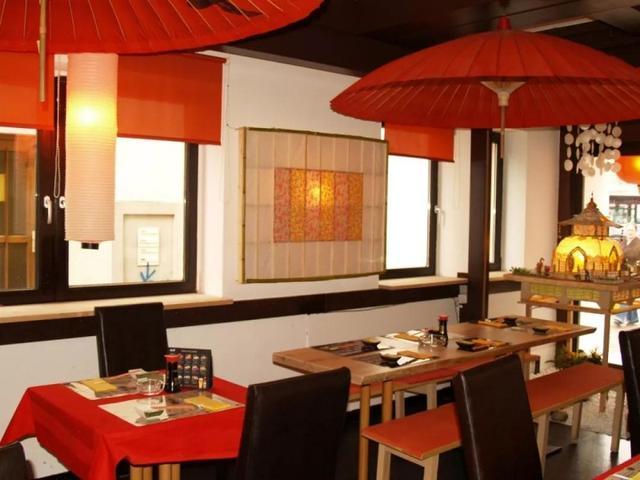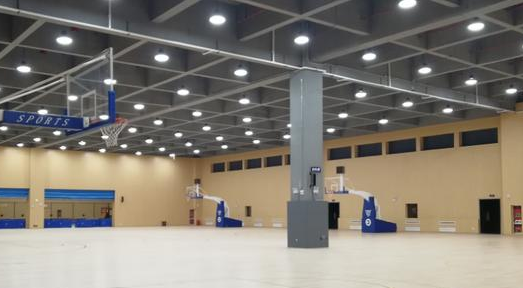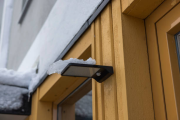1. Calculation Formula:
It is calculated by the unit capacity method, n=Pn/Pn, la. Among them, n represents the number of lamps required (branch), Pn represents the sum of the nominal power of all lamps when reaching a certain illuminance value (W), and Pn,la represents the nominal power of all lamps (W) when the illuminance reaches 100 Lx .
The basis for the calculation of the unit capacity method is:
In order to achieve an average illuminance of 100 Lx, about 22w of incandescent lamps or 5.5w of fluorescent lamps are required per square meter of indoor land surface area.
Calculations for incandescent lamps:
Pn,100=22w/m2*A(E=100 Lx,nB=0.3,n=15 Lm/w)
Calculations for fluorescent lamps:
Pn,100=5.5w/m2*A(E=100 Lx,nB=0.3,n=15 Lm/w)
A represents the floor area (m2), that is: for example, if the floor is 10m2, if the illuminance is 100 lx, consider installing 40w fluorescent lamps. How many lamps should be installed?
Pn,100 = 5.5w/m2*1m2 = 55w n = 55w/40w = 1.375 ≈ 2
If you take the indoor illuminance as 300 lx, then the number of lights required is:
Pn,300 = (E/100 lx)*Pn,100 = (300/100)*55 = 165w n = 165/40 = 4.125 ≈ 5 pieces
Can’t you follow this algorithm to figure out how much w is needed per square meter?
Factory illumination requirement is 250-300 Lx
The illumination requirement of “banquet place” is 300-700 Lx,
“Restaurant” illumination requirement is 150-300 Lx
“Restaurant”, the illumination requirement is 200 Lx, 5 meters high, 45 watts of energy-saving lamps, 80 1000 square meters. 2600 square meters, about 210.
2. How Many Watts of Energy-saving Lights (light bulbs) Are Suitable for the Square of the Home Area
The general standard is: 15 ~ 18 square meters of lighting with 60-80 watts of light. 30~40 square meters at 100-150 watts. 40 – 50 square meters at 220 ~ 280 watts. 60 ~ 70 square meters at 300 ~ 350 watts. 75 ~ 80 square meters at 400 ~ 450 watts.
Usually bathroom lighting is 2 watts per square meter. 4 watts per square meter is enough for dining room and kitchen. The study and living room are larger, requiring 8 watts per square meter. Lamps on desks and nightstands can use 15 to 60 watt bulbs, preferably no more than 60 watts.
Your room is a bedroom. If you need to read and write, if it is 15 square meters, it is recommended to choose an energy-saving LED ceiling lamp with a wattage of about 15W.
3. Basic Formula
It is mainly used for fast calculation, and the accuracy is poor, but it is sufficient for general spatial average illumination calculation.
Lux = ((Total Lumen) x LLF x CU)/ M^2
Illuminance = ((total lumens) x dimming factor x utilization factor) / area
The CU here must be checked according to the RCR (Room Coefficient) data of the lamps. But too much trouble.
So the general simple algorithm is Lux = ((Total Lumen) x 0.5)/ M^2 which is the fastest. Of course, 0.5 can be increased or decreased according to different situations, but generally it is decreased more.
Basically, in addition to calculating the average illuminance, the lumen method can also use the formula to calculate the number of lamps. If you make good use of the formula, it will make the work go faster and safer. 
I hope one day when a customer asks me that the lights I use are not bright enough or that I need to use a few lights, you just have to let him wait 30 seconds and use a computer to calculate it and then confidently say that there is no problem, absolutely just right.
There are other materials that can be used with the formula:
Lumen/W — how many lumens per watt
W/M^2—how many watts per square meter
Figure it out for yourself!
4. Lux = ((Total Lumen) x LLF x CU)/M ^2
Illuminance = ((total lumens) x dimming factor x utilization factor) / area
This formula can be calculated, the illuminance of 300 times 200 square meters is equal to 60000, the dimming coefficient is 0.8, and the coefficient is 0.8, that is, 60000 divided by 0.8, is 75000, and then divided by 0.8 is 93750 total lumens. 93750 divided by 3000 (the lamp is calculated by 3000 lumens, here is the approximate value, you can check the information according to the lamp you choose) is 31.25. That is to say, 30 tube lights or 32 are needed.
5. Illuminance E is the luminous Flux Per Second, E=φ/s.
The standard value of ordinary residential illumination is generally about 150LX.
The standard value of illuminance in ordinary schools and offices is generally about 300LX.
500LX should be used in art classrooms, teachers’ blackboards, design rooms, and senior offices.
Design interior lighting can be carried out according to the following ideas:
Emin=Eav/Z. (minimum illuminance = illuminance standard value/minimum illuminance coefficient)
According to the minimum illuminance, area and height, look up the table to get Po:
P∑=Po*A (total lighting power = installed power per unit area * power of each lamp)
Determine the number of lights in the illuminated room:
n=P∑/Po (number of lights in the room=total lighting power/installed power per unit area)
6. How Many Watts Per Square Meter Has the Following Meanings:
(1) How many watts of power does the solar photovoltaic plate generate per square meter? Crystalline silicon solar panels have about 140W per square meter.
(2) How many square meters can the air conditioner provide?
The empirical calculation formula of the cooling capacity of the air conditioner: 150W per square meter without the top floor and no western exposure, and then multiply by 110%. To make up for the error in the manufacturing process, multiply by 110%. Top floor, no west sun or no top floor, west sun, 200W per square meter. Both the top floor and the west sun, 250W per square meter. Other algorithms remain unchanged.
(3) The power that the wires used at home can withstand per square (square millimeter).
Generally, the safe current carrying capacity of copper wire is determined according to the maximum temperature of the wire core, cooling conditions and laying conditions.
Generally, the safe current carrying capacity of copper wire is 5~8A/mm2, and the safe current carrying capacity of aluminum wire is 3~5A/mm2. For example: the recommended value of the safe current carrying capacity of 2.5 mm2 BVV copper wire is 2.5 × 8A/mm2 = 20A. The recommended value for the safe ampacity of a 4 mm2 BVV copper wire is 4 × 8A/mm2 = 32A.









